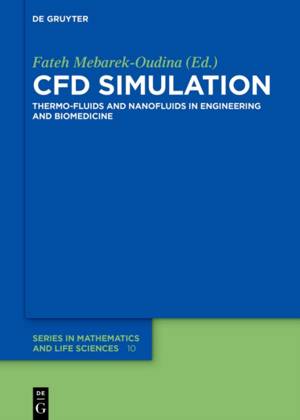
- Afhalen na 1 uur in een winkel met voorraad
- In januari gratis thuislevering in België
- Ruim aanbod met 7 miljoen producten
- Afhalen na 1 uur in een winkel met voorraad
- In januari gratis thuislevering in België
- Ruim aanbod met 7 miljoen producten
Cfd Simulation
Omschrijving
Information about the author:
Fateh Mebarek-Oudina received his PhD in 2010. He has published more than 120 papers in reputed international journals. Currently, he works as a full professor at Skikda University in Algeria and regularly serves as a reviewer for more than 250 international journals. He is ranked in the Top 2% Scientists Worldwide (2020, 2021, 2022, 2023) by Stanford University. His research work is focused on heat and mass transfer, MHD, mathematical simulation and modelling, biofluids, nanofluids, hybrid nanofluids, ternary nanofluids, microfluidics, and computational fluid dynamics.
Information abiout the book:
Mathematical modeling presented in the book is designed to help engineers understand physical systems, including magnetohydrodynamic effects on the non-Newtonian fluid flow and multiphase flow. Special attention will be given to heat transfer and entropy generation analysis on hybrid nanofluids. The process of entropy generation for nanofluid flows through porous channels will also be discussed and analyzed by means of a theoretical approach and CFD modeling. Some applications to blood-mediated gold-silver nanoparticles will be presented with detailed numerical examples. The book is designed to facilitate a more profound understanding for engineers of adopting CFD models to natural manufacturing environments. Overall, the primary objective of the book is to present mathematical modeling with CFD applications to simulate real-world engineering, industrial, and medical science problems to expose various analytical and numerical techniques and, at the same time, extend to expose researchers and academicians to the recent advancement in these diverse fields.
Specificaties
Betrokkenen
- Uitgeverij:
Inhoud
- Aantal bladzijden:
- 410
- Taal:
- Engels
- Reeks:
- Reeksnummer:
- nr. 10
Eigenschappen
- Productcode (EAN):
- 9783111404547
- Verschijningsdatum:
- 19/05/2025
- Uitvoering:
- Hardcover
- Formaat:
- Genaaid
- Afmetingen:
- 170 mm x 244 mm
- Gewicht:
- 848 g

Alleen bij Standaard Boekhandel
Beoordelingen
We publiceren alleen reviews die voldoen aan de voorwaarden voor reviews. Bekijk onze voorwaarden voor reviews.








